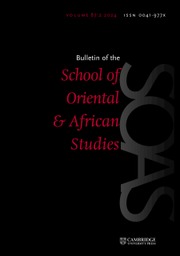No CrossRef data available.
Article contents
Phonetic Transcriptions from Indian Languages
Published online by Cambridge University Press: 24 December 2009
Extract
These transcriptions are tentative in character, and are presented with great diffidence. The idea was taken from similar transcriptions of versions of the fable of the North Wind and the Sun in various languages published by the International Phonetic Association in an excellent little pamphlet, The Principles of the International Phonetic Association. They have been done from dictation by persons who habitually speak the respective languages, and the transcriber has checked and in other ways sought to verify them at every step. Nearly all of them were done in Calcutta early in 1919, but they have since been revised. He has not given a table of sounds, as so many languages and dialects (there are some twenty-two in the present paper, including practically all the important languages of India) cannot be well represented all together. The sounds of Sanskrit may be regarded as the norm for all Indian languages, and the ordinary values of these are too well known to be described here.
Information
- Type
- Papers Contributed
- Information
- Copyright
- Copyright © School of Oriental and African Studies 1922

